Active Noise Control - The Sony WH-1000XM3
Active Noise Control (ANC) headphones.
I've been wanting to get one for a while since I first tried the Bose Quiet Comfort 35 II. The Bose is my first positive experience of ANC, and the Bose is THE phone to buy if you want the best ANC.
Here in Australia, we see QC25 and QC35 for sale/demo in the shops; and we see people wearing them like a fashion statement out in the streets.
The Bose has the best ANC, but not any more.
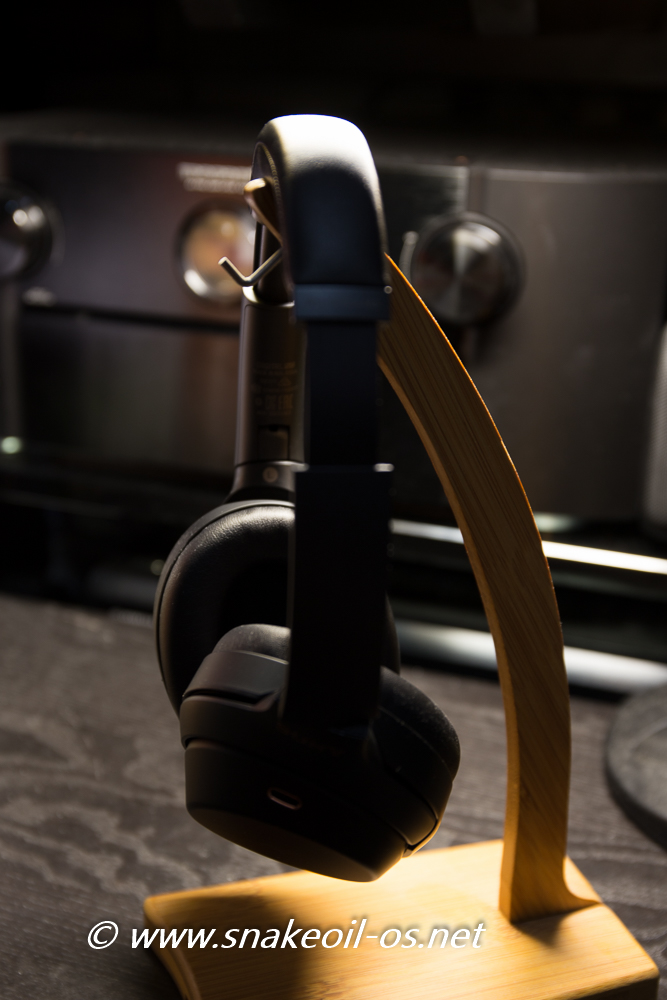
There is a new kid in town. All hail the market leader in ANC - the Sony WH-1000X M3.
Like Bose, this came from the left field. And like like Bose, it asserted it's authority immediately on arrival. And now the Sony sits atop the mantle as the best ANC headphones available in the market today. If you need any proof the Bose has been toppled, just look at the street price for a pair of QC35II now. Stores has no choice to cut the price to compete with the Sony.
Actually, this Sony has been available for sale for a while (The M3 is released probably around ~ Aug 2018 if not earlier). It just took me this long to snag one at a good price - just under AUD$300.
Packaging
Here are some pictures showing the packaging of the WH-1000X M3. The outer packaging is normal enough - remove the shrink wrap, and slide out the black drawer.
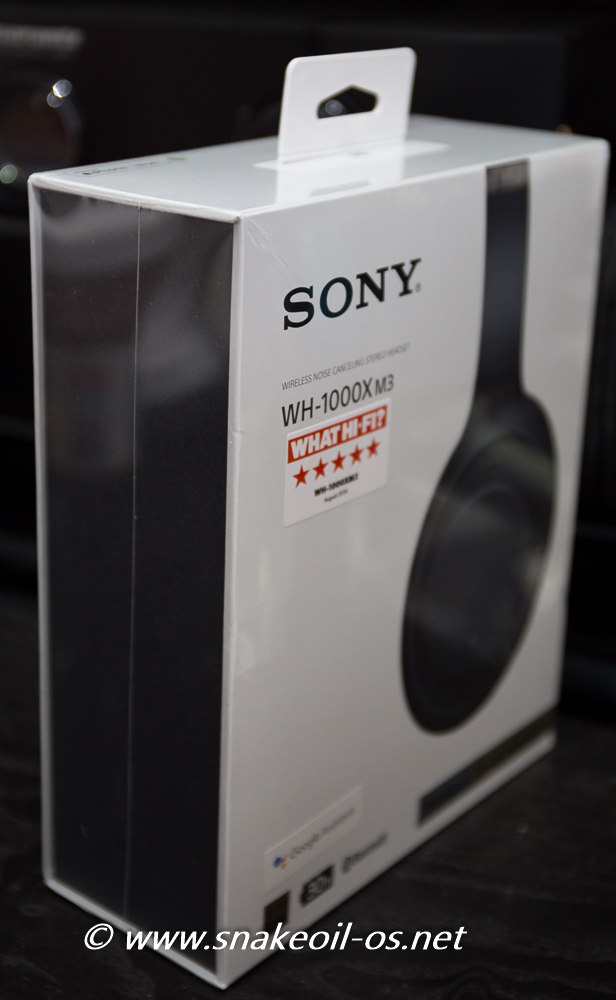
Back of packaging - a lot of marketing buzzwords.
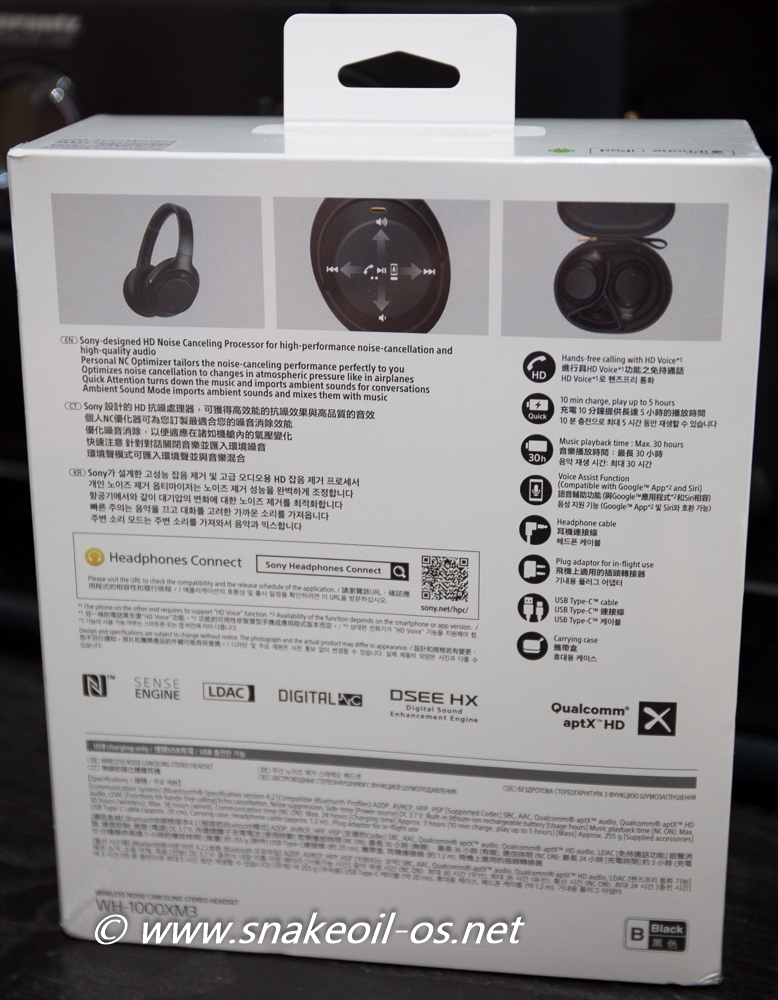
Looking at the outer packaging, it's hard to believe these headphones' RRP is AUD$499.95. :roll:
Inner Box
Hmm, download the app, what app? Guess I will find out what this is later. Underneath this piece of paper, you can just see the the headphones pouch.
Under the headphones pouch are some informational booklets. Not too sure what they are yet. Nobody's gonna read these manuals.
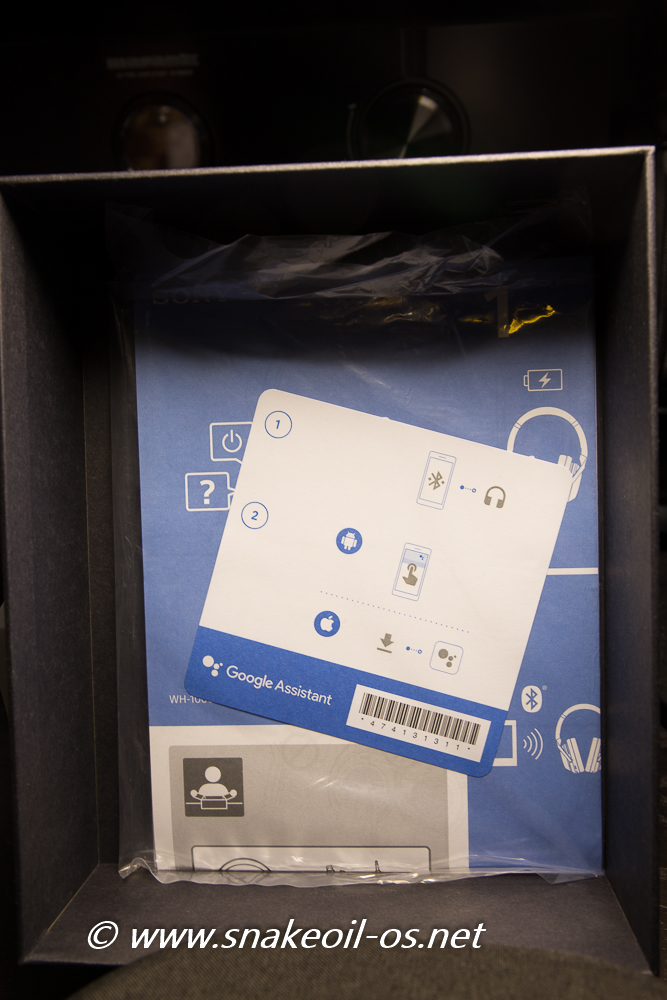
Headphones Carry Case
The case is pretty unassuming.
A bland clam shell design with dimensions that's approximating 20 cm wide, 16 cm deep and 6 cm high. Bland, except for the Sony branded copper coloured zip.
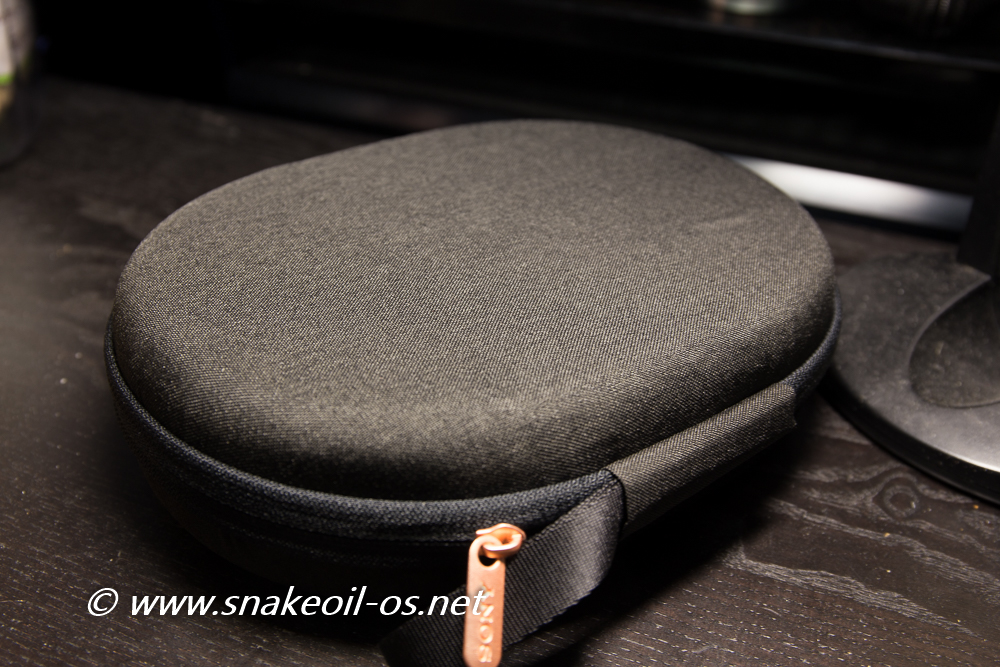
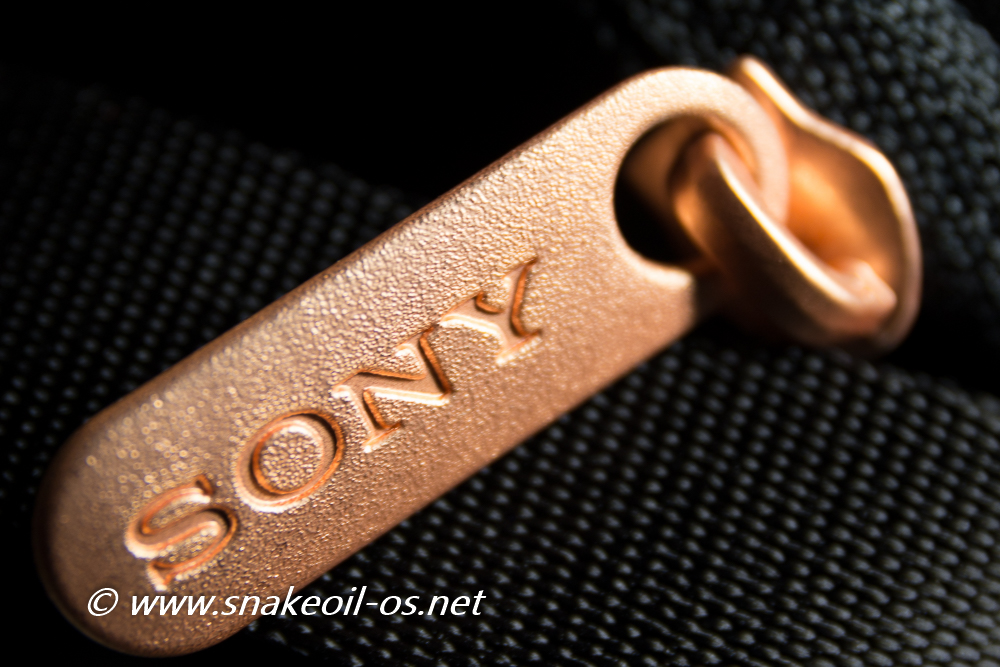
Simplicity but with a touch of elegance. A simple zipper somehow add that extra bit of class to what is otherwise a bland clam shell case.
Clam Shell un-clamed
Headphones officially unboxed. The same copper hi-lights are also present on the headphones as well. The black/copper contrast is indeed a very nice touch IMO.
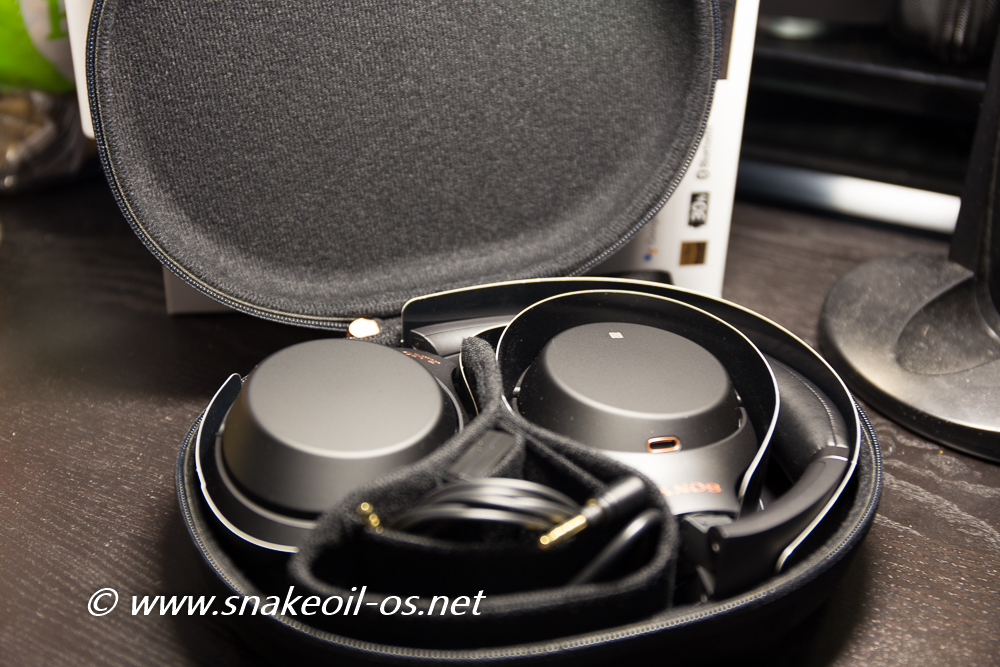
There are no padding at all inside the case, do not expect this to protect your headphones against hard knocks.
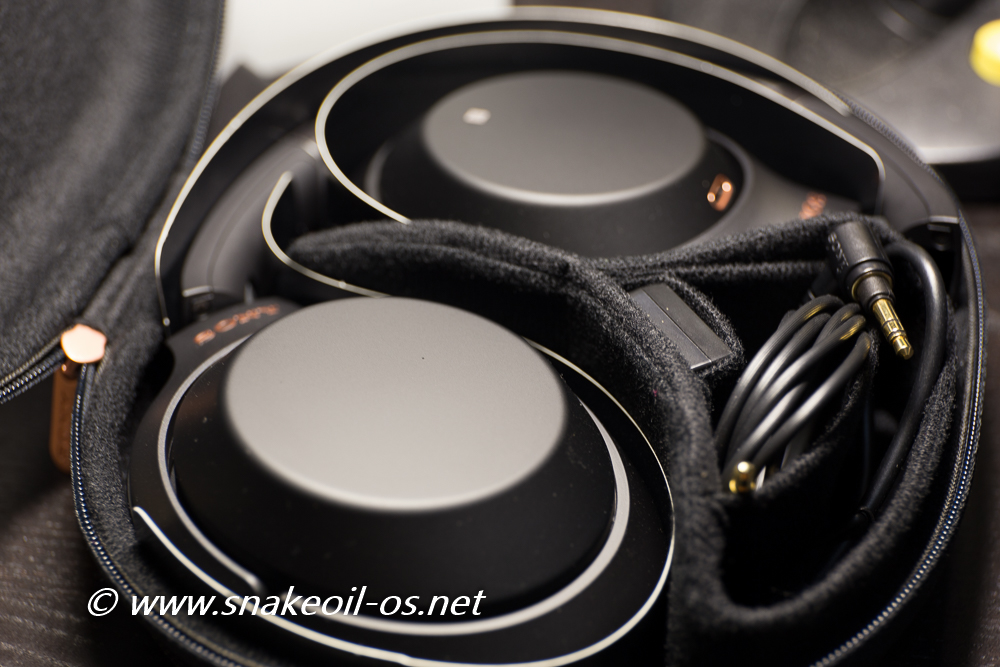
Here you'll also find short a stereo analogue cable and an airline audio adaptor.
Is That All For $500?
Here's a close up of the ear pads.
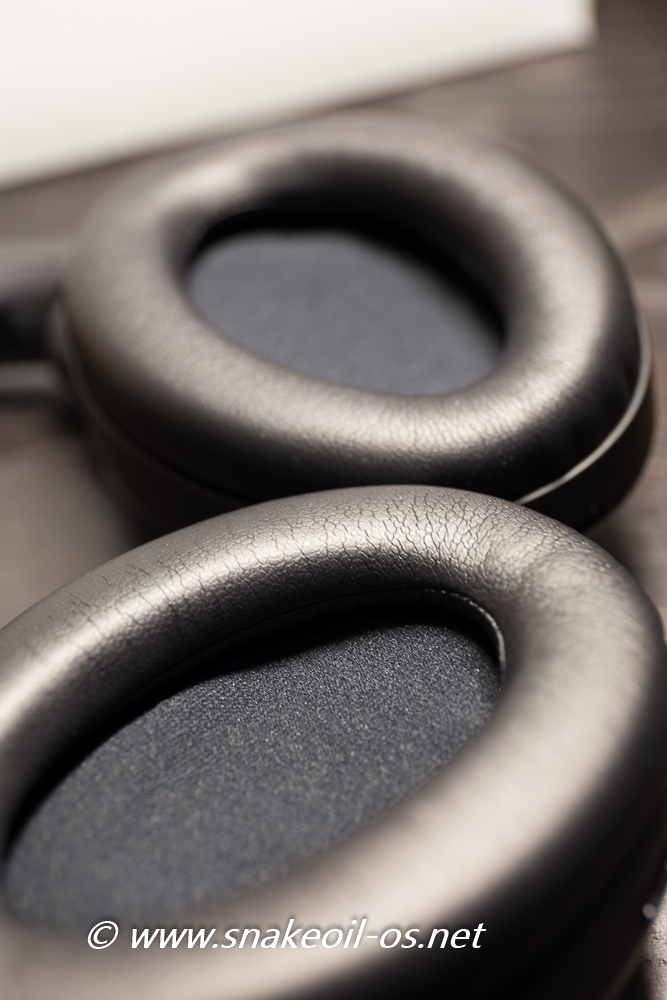
These are fake leather, and it's relatively comfortable.
So far nothing really scream luxury here. The headphones are largely made of plastic - so it does not exactly scream durability either.
Back in my day $500 used to mean something - when you buy something for $500, there is an expectation that you can use it for decades to come. Nowadays $500 only appears to buy you a throwaway gadget - a fashion statement. Something you'd use for one, maybe up to three years before replacing it with something else.
With this pair of headphones, you're really spending money on the technology, and not the physical headphones itself. In my opinion you should overlook these Sony if you want longevity.
Don't get me wrong, the build quality and finish is excellent. The plastic does feel different, and the headphones does seem to stand up to abuse. But at the end of the day, this is still plastic, a part of me still think - this is not going to last long.
Bundled Cables
Sony included the following accessories:
- Approx 30 cm Short USB Type C cable (Sony Branded)
- Approx 1 metre 3.5mm analogue cable (Sony Branded)
- Airline adaptor (Stamped with the word China)
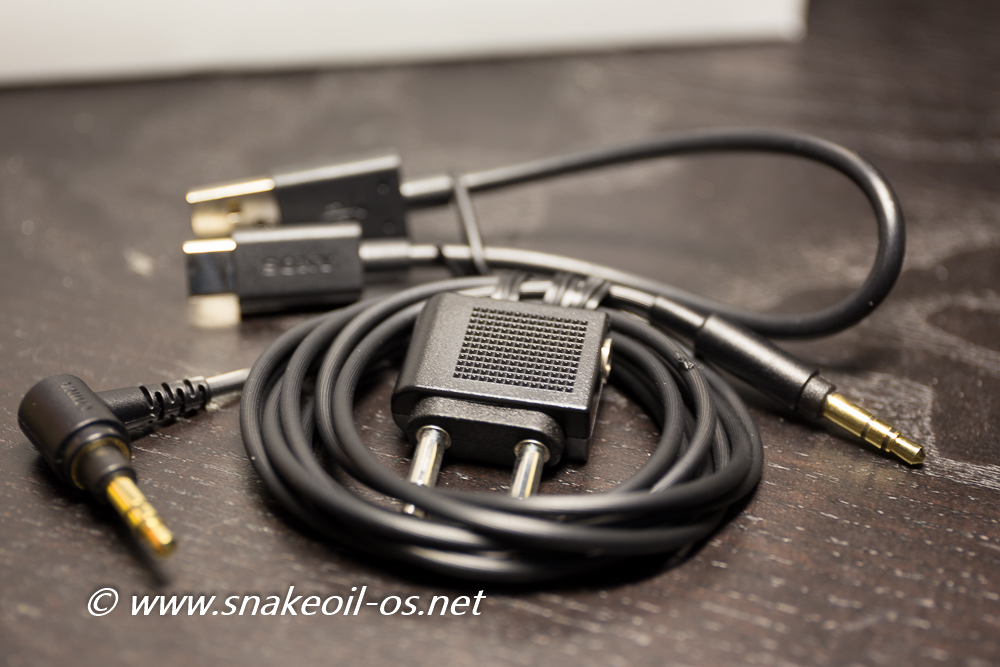
These cables look pretty decent. And yes, I do believe they'd outlast the headphones:>! The airline adaptor is a nice touch. Although I do not travel much, when I do it's always cattle economy class.
I never enjoyed air travel. Hopefully these headphones can help relieve some of the discomforts of flying.
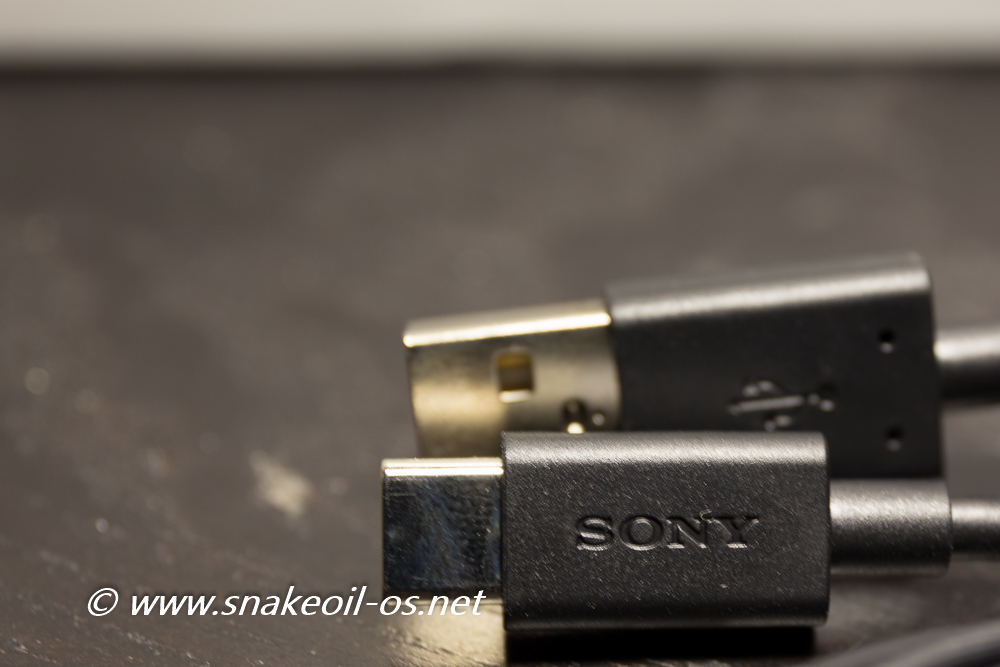
Here is a close up of the Sony logo. Really love the macro feature of my 24-70 F4 lens.
Listening Impressions (Passive)
So how do these headphones hold up?
I evaluated these headphones when it's brand new out of the box. Using my office DAC with the included analogue cable.
Music is stored on a 4TB portable HDD, and the playback software is Foobar (v 1.4.2).
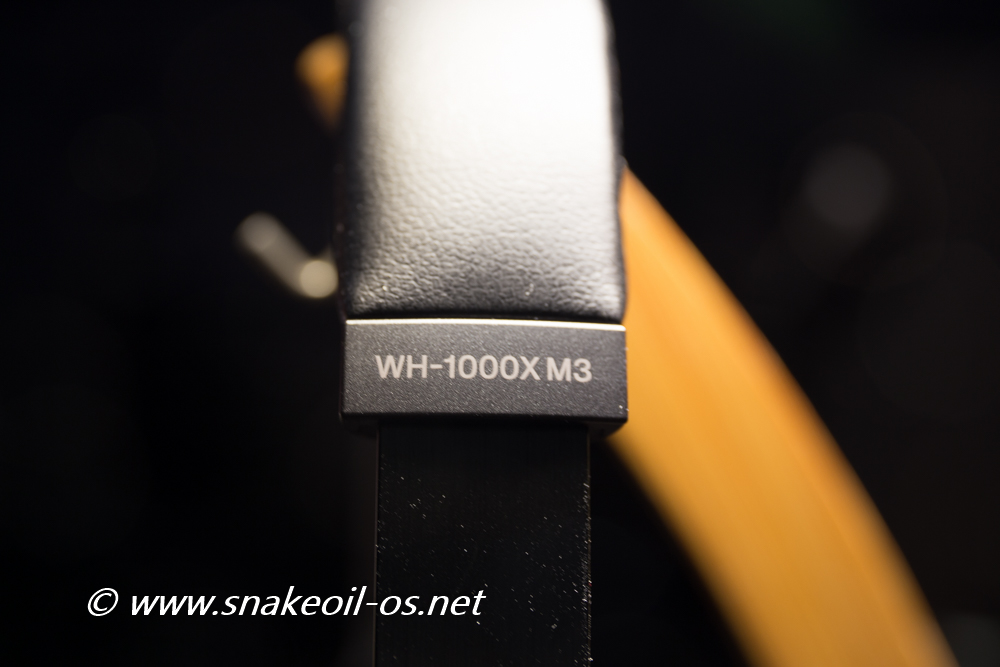
I am going to first and try to listen to music (via cable) with ANC turned off (passive mode).
Panning from Left/Right is relatively good with no break up in the imaging. Depth perception is good.
However, there's a peculiarity - the imaging of the sound stage is just slightly below the ear. It's hard to describe this, it just feels like the headphones are below my ears (even though the headphones are over my ears). This is like listening to ambient music from speakers that's not directly firing at me.
The above aside, I'm actually surprised and somewhat impressed with the audio quality. Is the audio 'audiophile' grade? I would say so:
- Con: Sounds a bit bright out of the box, but I believe this will be gone after a while
- Con: I'm hearing this weird wind noise when nothing's playing. Maybe it's the air-conditioner above me, but the noise is pretty annoying as I can still hear this when music is playing
- Pro: Imaging is relatively good. Sure headphones can never beat a properly setup 2 channel audio system, but the Sony offers a good compromise
- Pro: Timbre is relatively accurate. Discounting the brightness (which I know will go away), there balance is neutral with no over emphasis on bass (a pet peeve I hate with modern audio systems)
- Pro: High resolvability. These headphones can resolve a lot of detail even when playing at low volumes. Forget about playing music that are dynamically compressed. The Sony is not forgiving - you will hear the distortions and how flat the music is with compressed music.
These cans are surprisingly revealing - it is more than capable of resolving a lot of micro details in the records.
Do not expect to enjoy music with a DR rating of 8 or below - you'll be able to hear distortions (clipping) even at relatively low volumes. This resolving ability alone qualifies these phones as audiophile grade.
While plastic does feel cheap, there is an upside - they are lightweight. While are other cans may sound better, they are also incredibly heavy. The Sony also do not clamp my head tightly (a common problem for me as that'll give me migraines). I have no problems wearing this for extended periods without fatigue. All up the Sony is very comfortable to wear. After testing so many headphones, I would rate this as one of the more comfortable to wear.
Sony strikes a good balance between mobility and sound quality. And when you add in the excellent sound cancellation, it's a winner! Perfect for those long distance flights.
Listening Impressions (Wired Active Noise Control)
After about 4 hours in passive mode, I decided enough is enough and flick on the power switch. ANC at work - there's instant silence! The wind noise is completely gone, all the office chatter and other ambient noises pushed to the background.
It is so quiet my brain simply froze - I even felt a sense of dizziness as it's pretty disorientating. This is so quiet, I can hear myself breath.
Then I hit play. My first observation is that "below the ears" sensation is gone. The music is now lifted up and is at my ear level once ANC kicks in. This really improves the sound perception, and less annoying.
Foobar was playing this album at the time - Fever, a Cantonese album by a Hong Kong Artist called Vincy (泳兒). In Hong Kong, people say you have a fever when you're passionate about something. This album is dedicated to audiophiles (i.e. people with audio fever).

This recording is done well very little compression - and it really shines when listening with the WH-1000XM3 (in more ways than one).
Here are some some stand outs.
Track #4, "新不了情" is just Vincy, an acoustic guitar and what sounds like an accordion. I find myself drawn into Vincy's voice. The guitar and the accordion is really hypnotic. And there's the constant soft "pops" that sound like a digital artifact, and yet, it could be ambient noises picked up by the recording mic. The WH-1000XM3 just lacks that extra resolution to tell me what those noises are.
Track #6, "完全因你" is another track that focuses on her vocals. Some headphones will give you the impression the singer is "larger than life" (aka "big mouth"). Not so via this Sony, the scale of her voice is just right. And this really draws me into performance.
While dynamic compression is handled well in this album. The constant pops are just annoying. I am almost certain these are processing artifacts, perhaps introduced when they resample the masters down to 16 bits at 44.1 kHz.
Unplugging the analogue cable turns the headphones off automatically. Not entirely sure if this is configurable, but it's a nice UX touch.
A very nice touch with these phones is you can disable noise cancelling simply by cupping the right earpiece with your hand. While it may seem rude to talk to somebody with the headphones on, this is really useful.
Android App
There is an App for that! Yes, even headphones, and it's called "Sony Headphones Connect".
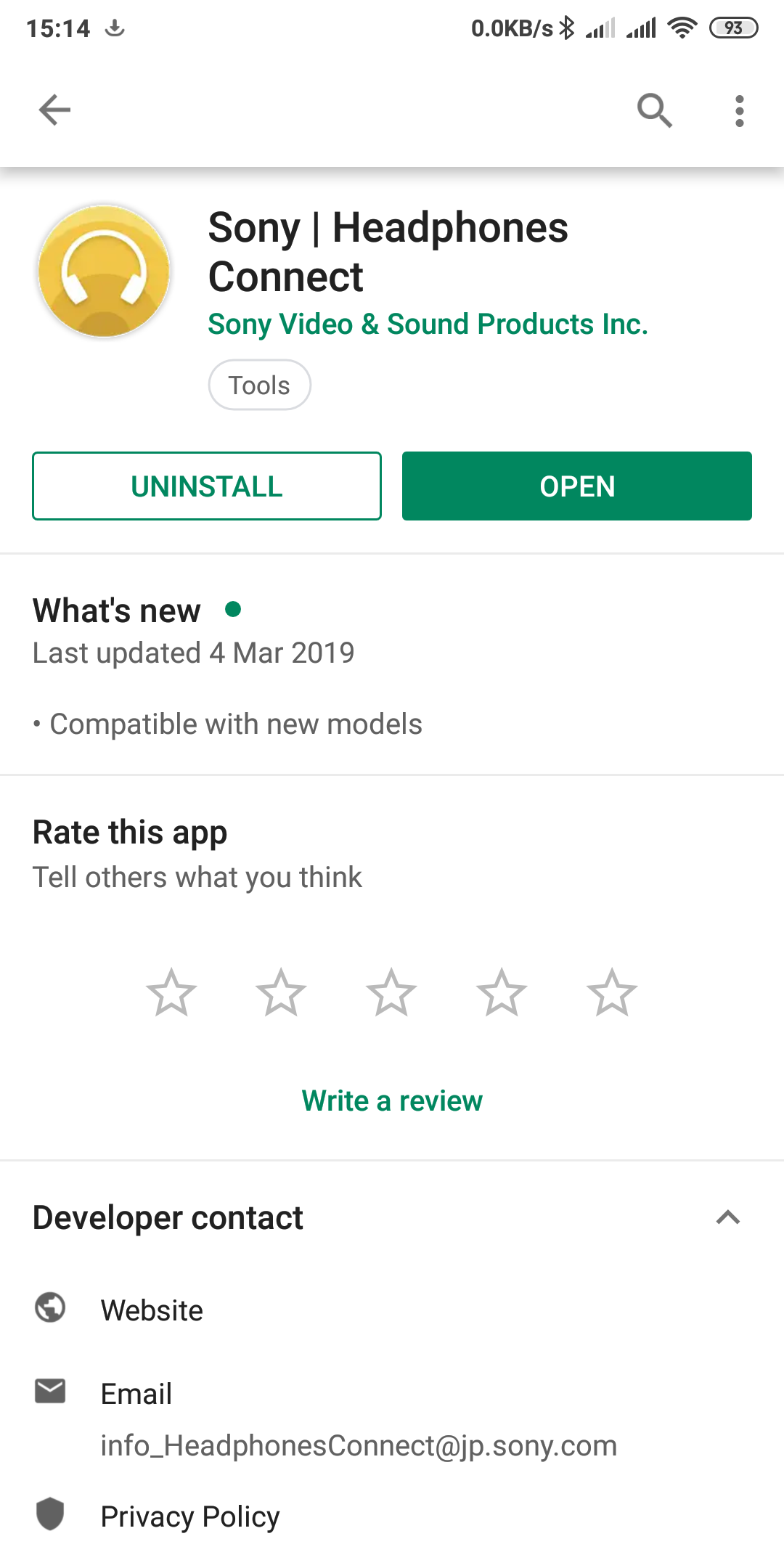
First thing this app did is to tell me to upgrade the firmware. Why not, I figured?
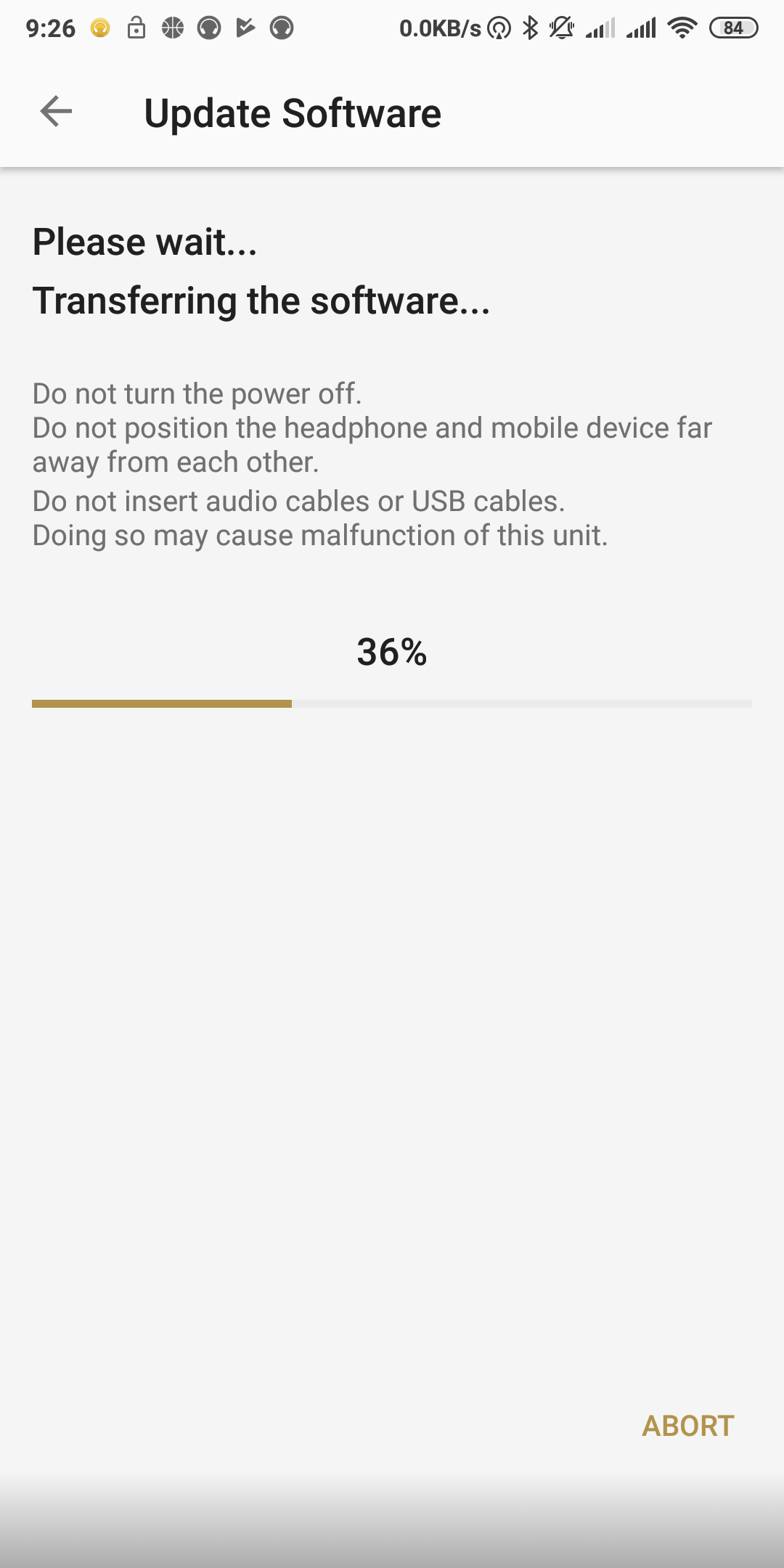
Updating took a long time. The batteries were fresh when I started this 100%, at the end of it, the battery level indicated 0%. As far as I can tell, I cannot keep the headphones charged and be connected to BT at the same time. It's one or the other. Worried to think what happens when the battery falls flat during the firmware upgrade.
Hopefully subsequent updates will not be as time consuming. This is something Sony really need to look into.
Android App
You can connect to the headphones using two protocols LDAC. or SBC. Follow the links to find out the details, but in simplistic terms. You want to LDAC for the better audio quality, and SBC if you want better battery consumption (and DSP).
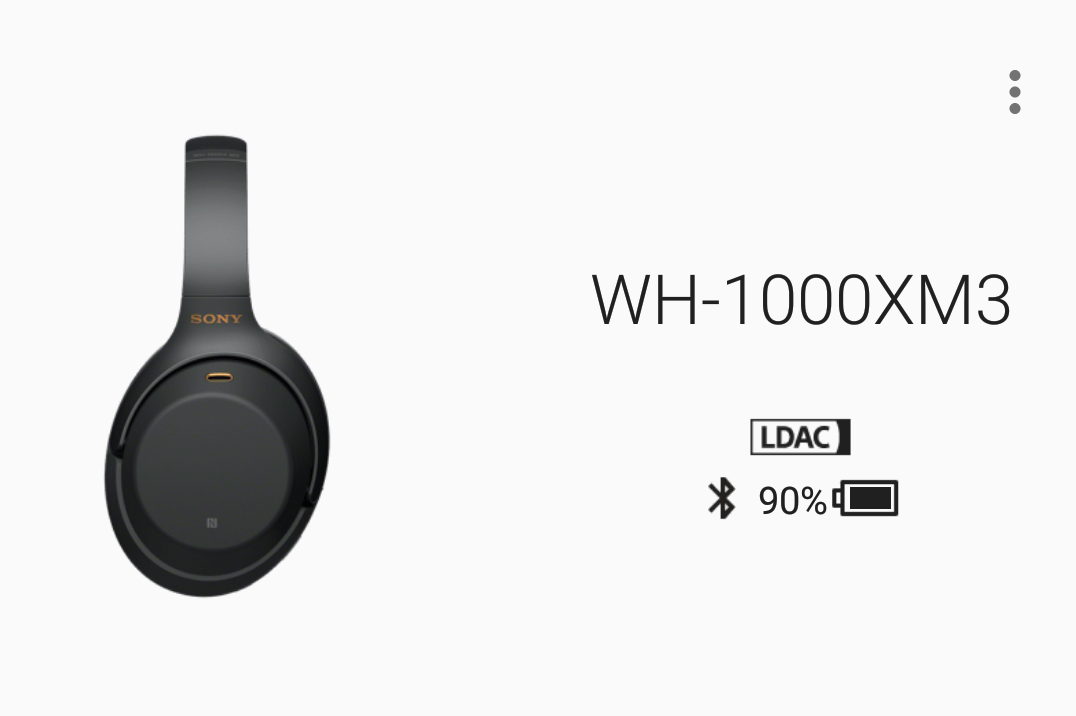
Pretty sure this phone also supports AptX, but my phone doesn't so I cannot test this. Refer to this specifications for a list of supported bluetooth codecs. Scroll down the app and you get a bunch of other things.
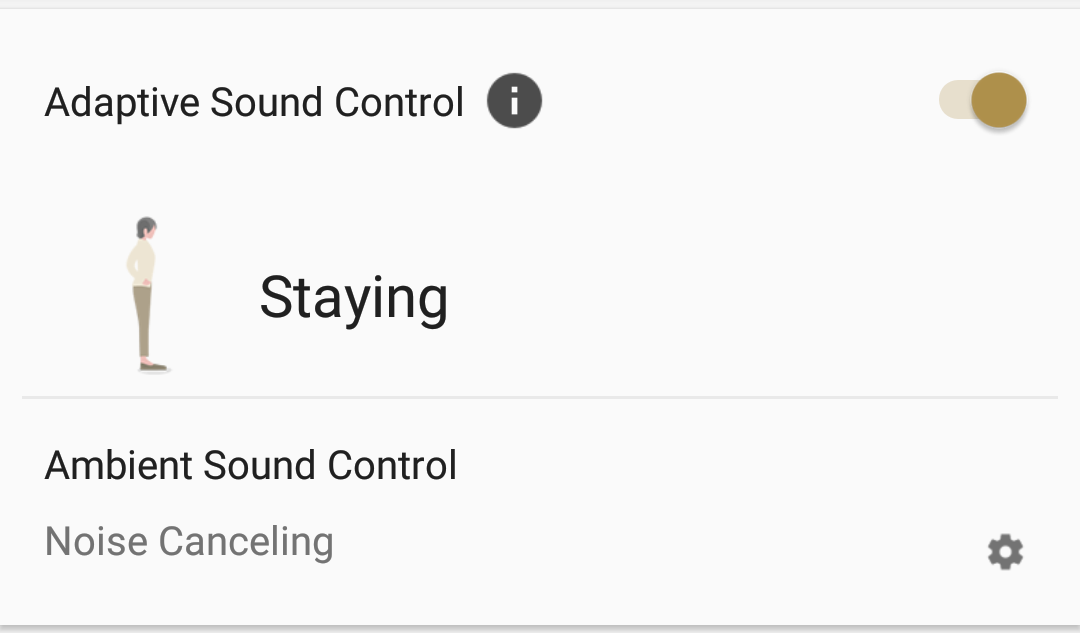
Adaptive Sound Control is a cool feature to have. The headphones basically detects what activity you are doing and will apply different noise cancelling profiles depending on what you're doing - sitting at a desk, walking, exercising or in public transport. Click on that gear icon to define the profiles:
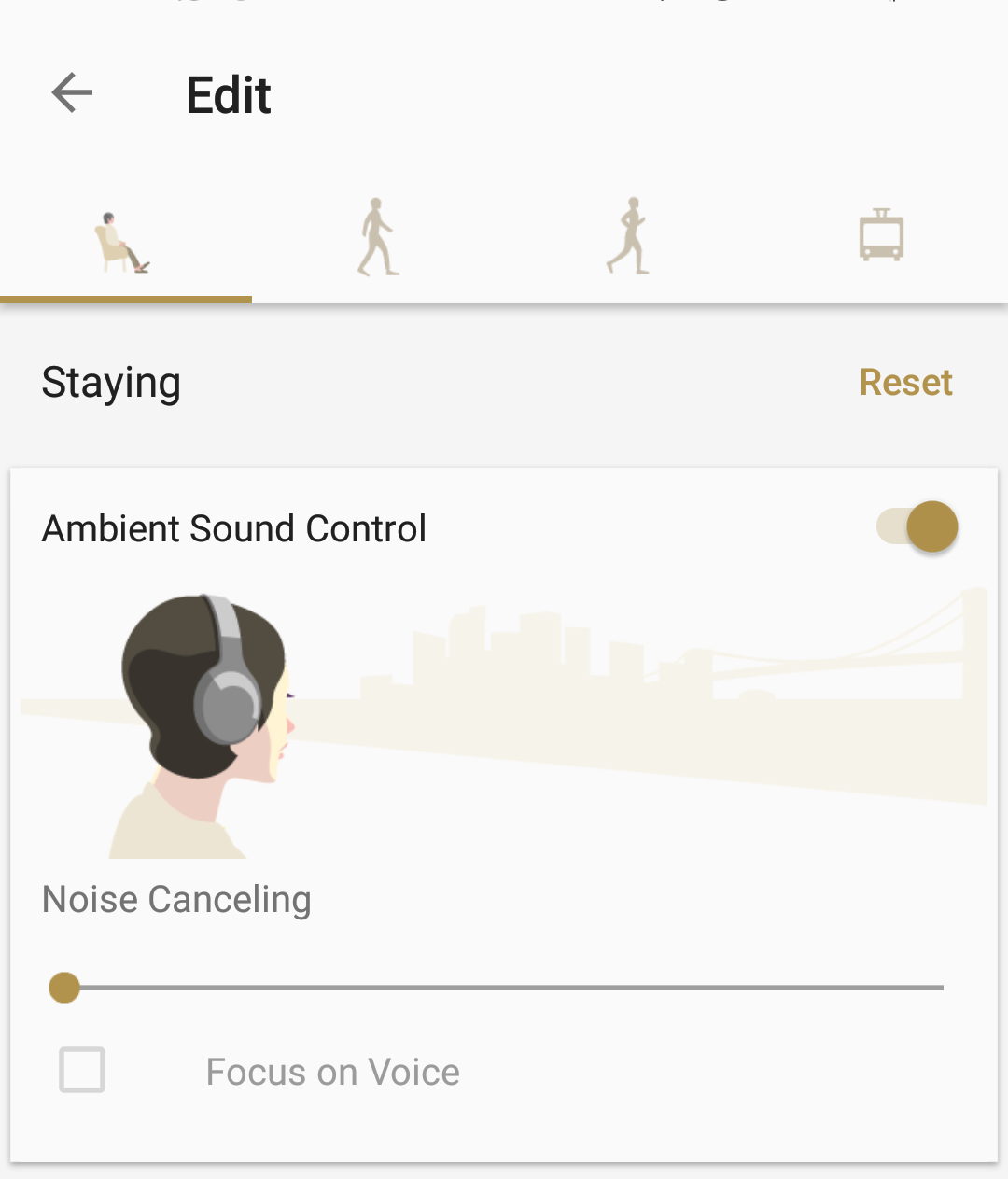
Here you can customise the exact level of noise you want to cancel out when performing certain activities. Example, you don't really want to cancel out all traffic noises completely when you're walking.
[adsense:]
[pagebreak]
Android App
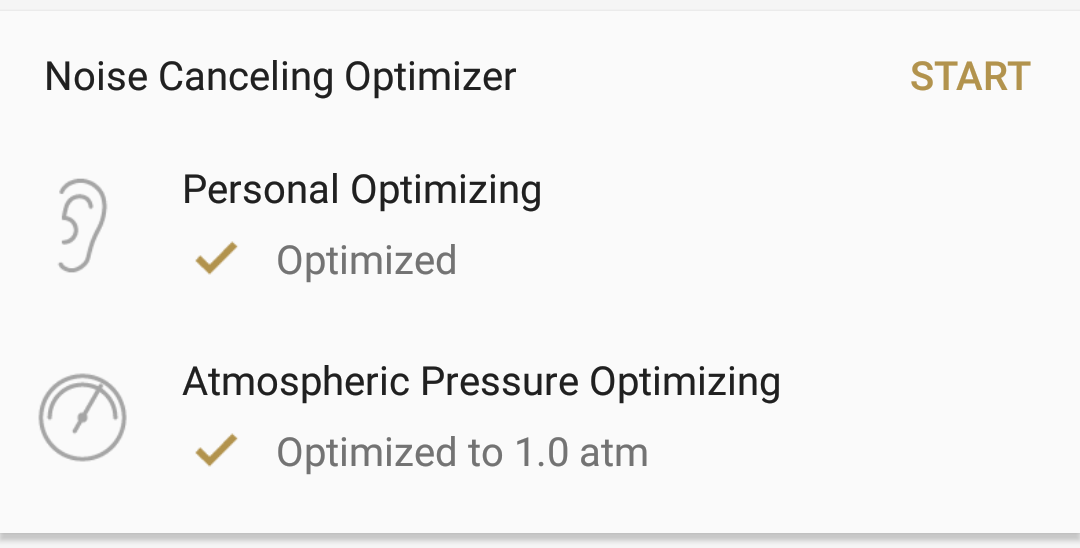
Noise Cancelling Optimizer. Click on Start to begin the process of optimisation. This is the same as pressing the hardware button on the left earpiece. One bit of information that may come in useful is the atmospheric pressure the optimisation is based on. This is definitely something I am going to try when I'm on a plane.
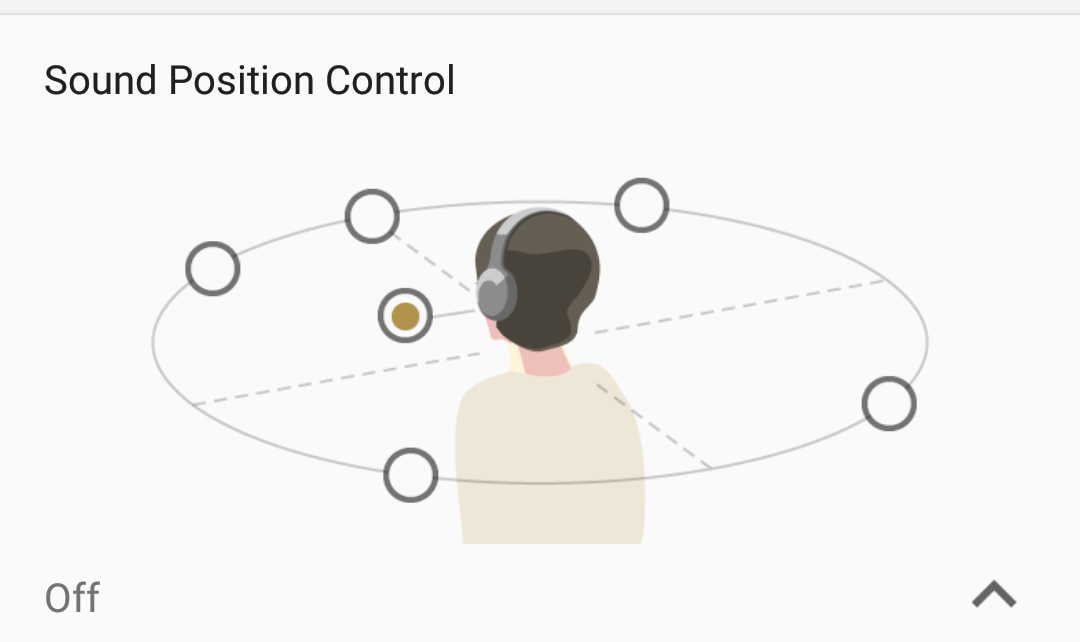
Sound Position Control. This is a form of DSP that localises the sound around the headphones (front, left, right, rear etc). Not exactly sure what this is used for, but I'll be guessing this is used in gaming. You need set "Sound Quality Mode" to "Priority on Stable Connection" in order to use this feature.
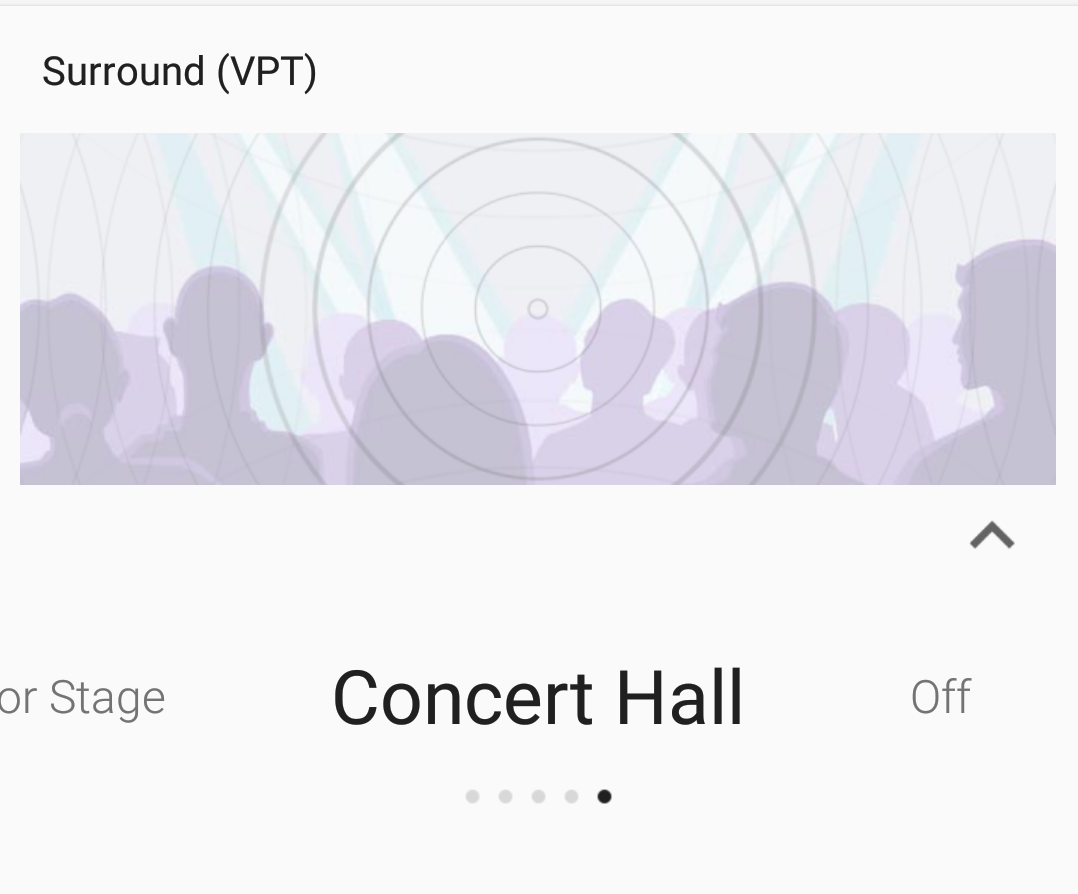
Surround (VPT). This is another form of DSP which will simulate the effects of sound in a room. The choices are Arena, Club, Outdoor Stage and Concert Hall. I honestly struggle to understand the purpose of this, or why would anyone want to ever use this.
Android App
Equalisers! Now that is a useful feature. There are several to choose from: Off, Bright, Excited, Mellow, Relaxed, Vocal, Treble Boost, Bass Boost, Speech, Manual, Custom 1 and Custom 2. The default set of settings just about covers everything from audio books, movies, music and more.
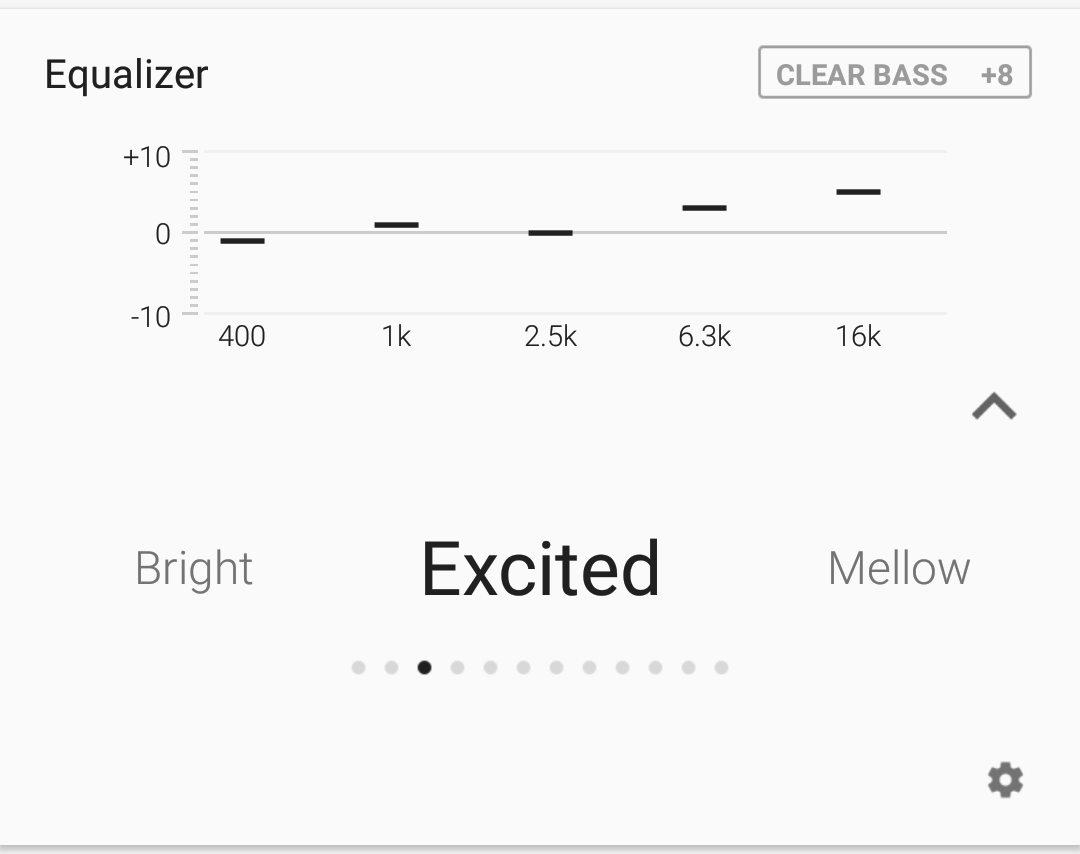
Click on the cog at the bottom and you can create two custom Eq profiles. Some people will undoubtedly say 5 bands isn't enough, but fear not. If you're in that camp just set the EQ to off, and use your music players' built in equaliser.
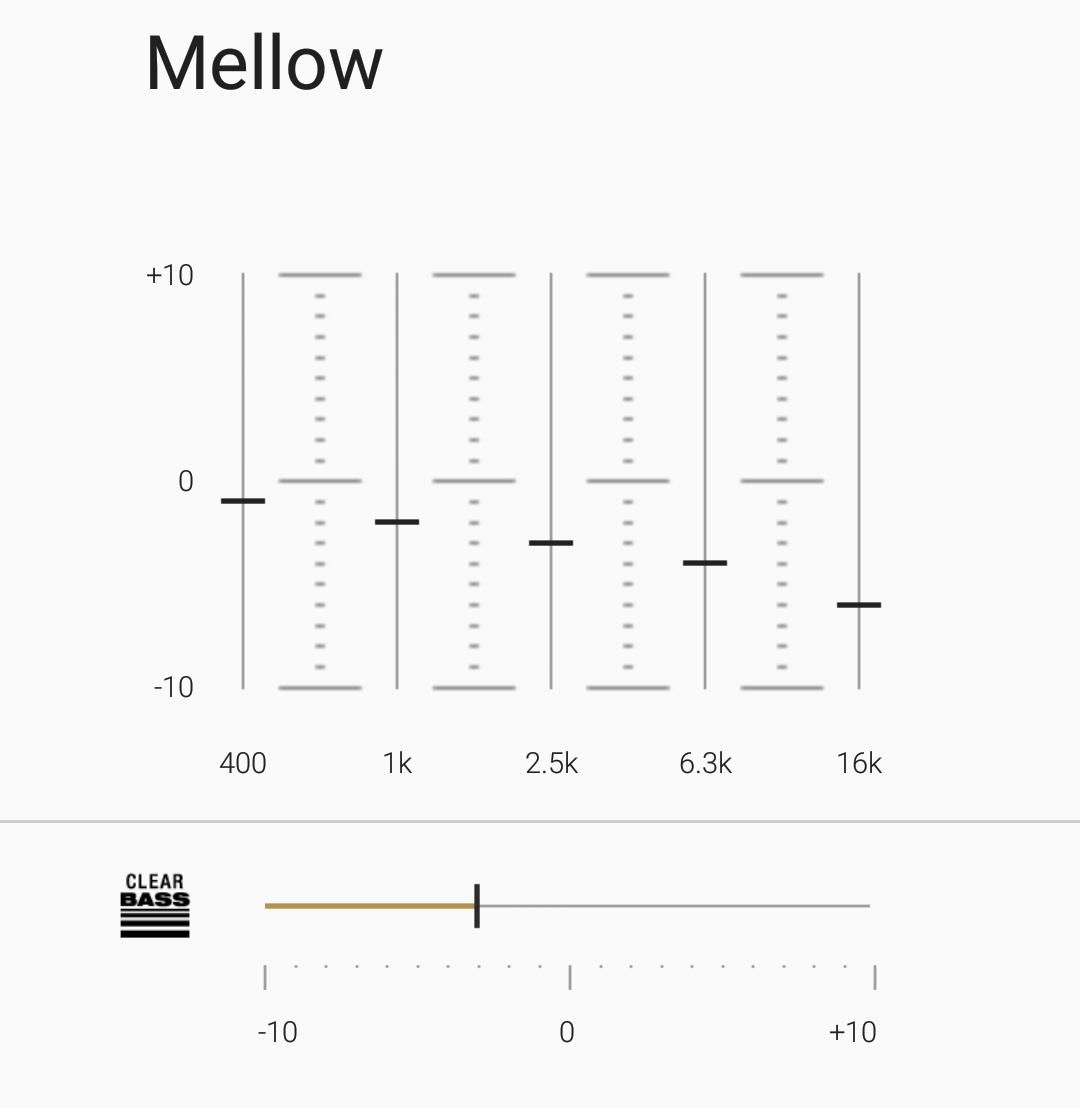
Android App
Seems like this app alternatives between something useful, and something not.
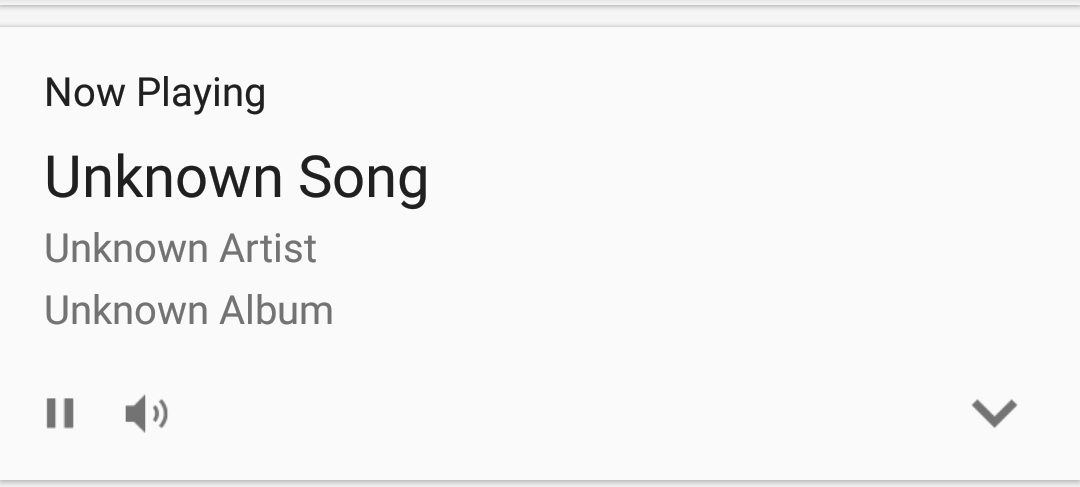
Now Playing. This control will show the current active track. You can skip back/forward and even adjust the volume from this widget. You can also do the exact same thing from your music player app, or from gesture on the right ear piece. So why include this?
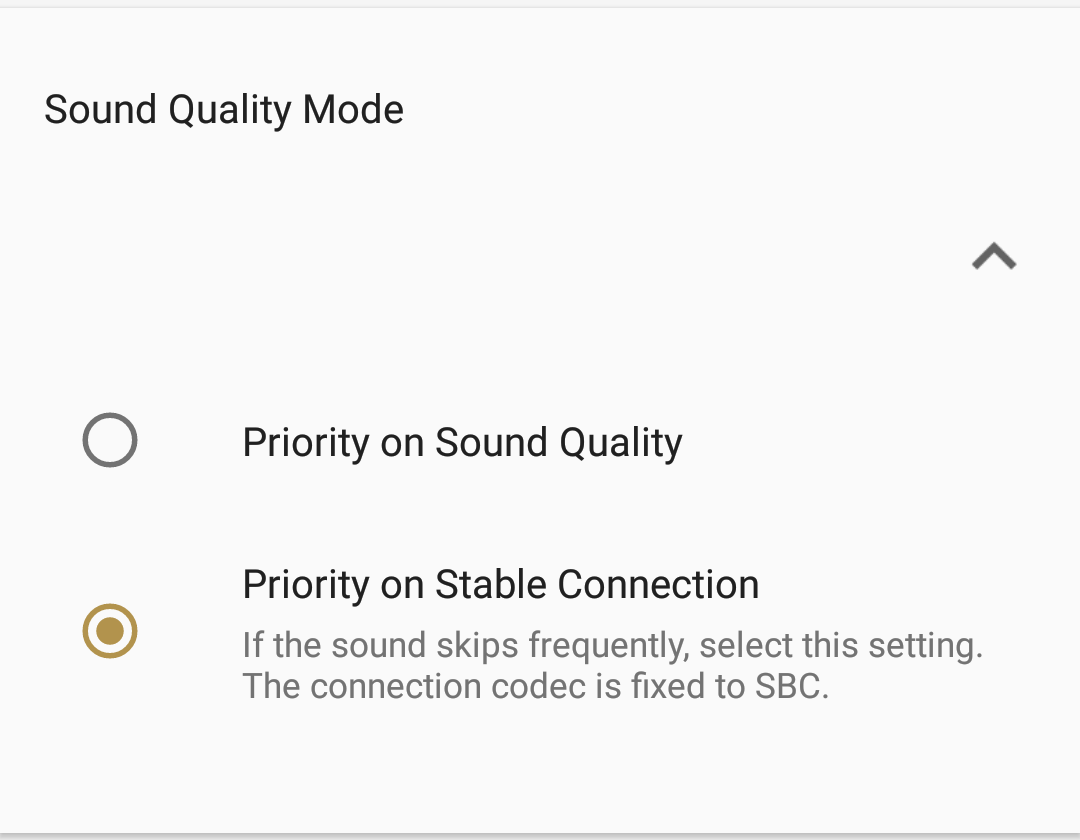
Sound Quality Mode. Here you can choose between sound quality, or stable connection. Implying you can only have one or another |-|. Stable connection for me is a significant drop in audio quality, so stick to just "Priority on Sound Quality" unless you experience issues.

DSEE HX. I had to look this up. DSEE is show for Digital Sound Enhancement Engine. Similar to Marantz's M-DAX technology, it expands compressed music like MP3 to make it sound better. But unlike M-DAX, DSSE HX is just on/off and you cannot adjust any parameters.
Android App
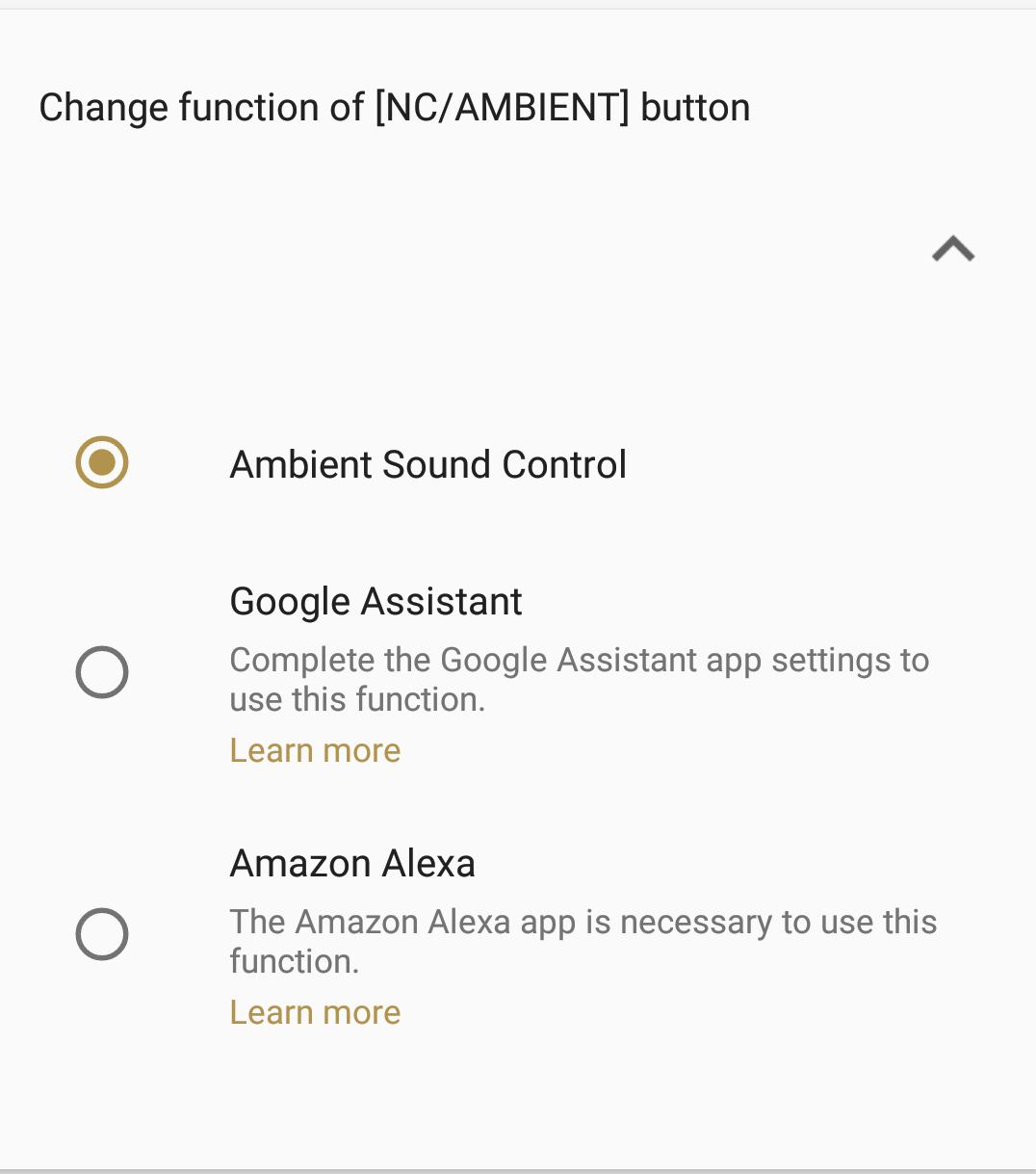
Change function of [NC/AMBIENT] button. By default you press the NC/AMBIENT button to choose between "Ambient Sound", "Ambient Sound Control Off", and "Noise Cancelling". With a firmware update you can add Google Assistant or Alex support, and you activate the smart agent by flicking this button. The downside of this is you can only control NC/Ambient via the app once you're in a smart assistant mode.

Automatic Power Off. You can adjust this to conserve battery power. Note that the headphones will not power off when the analogue cable is plugged in (after you turn the phones on of course).

Notification & Voice Guide. You can change the spoken language to something else in here (e.g. Brazillian, Chinese, etc). I played around with this setting, and the update to Chinese takes 7 minutes. Pass!
Listening Impressions (Wireless Active Noise Control)
The WH-1000XM3 is really designed for wireless listening. There are several gestures you can use on the right ear piece.
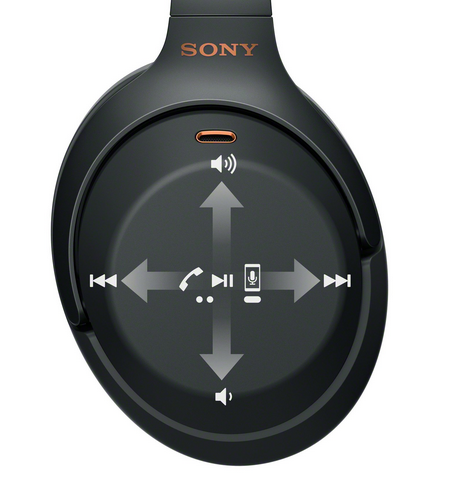
I have never used my mobile for music before so I struggle to find something quick for this review. In the end I picked Plex, as it is already serving my music library. This means I am playing music I am familiar with or accustomed to.
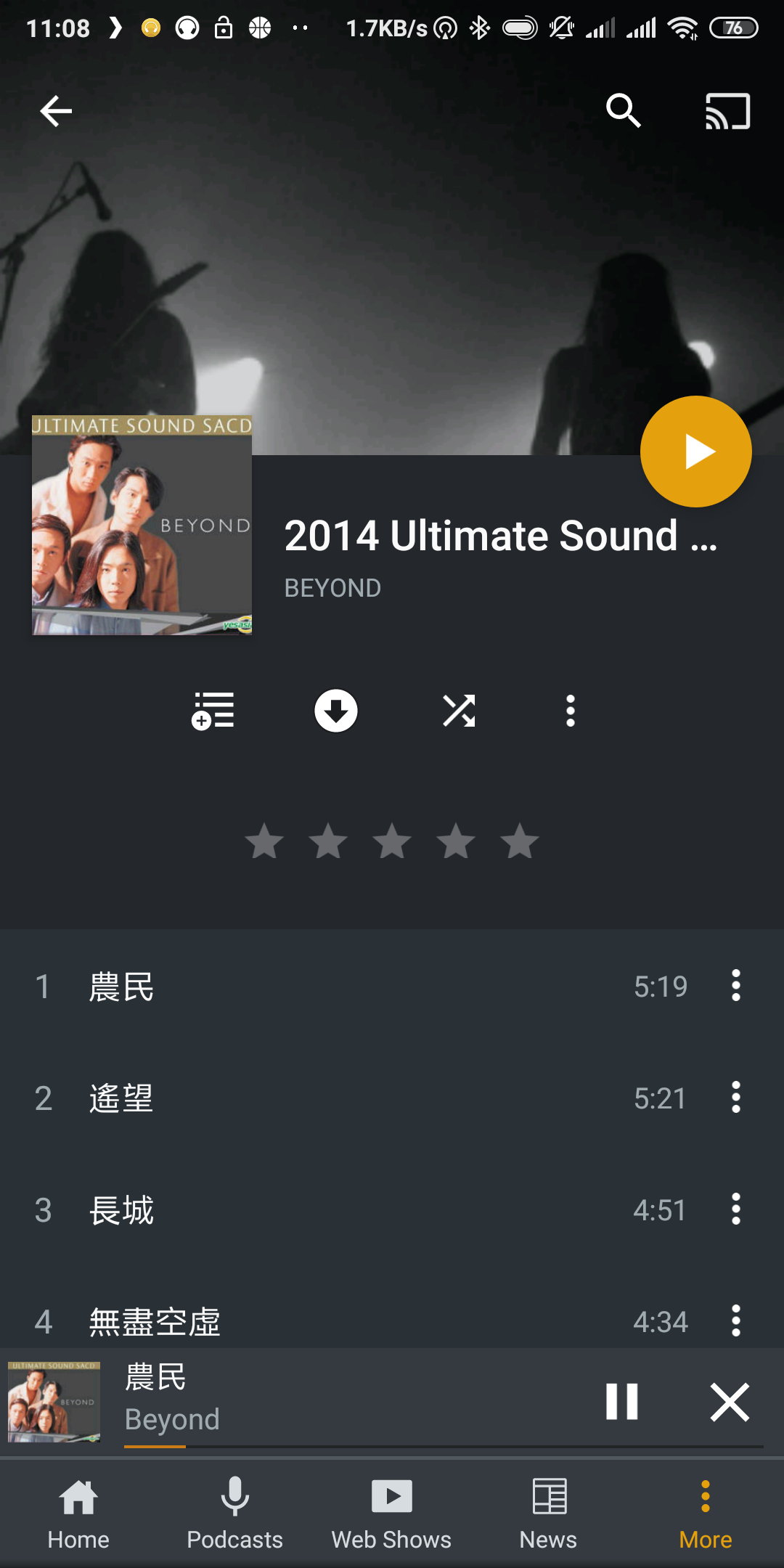
Listening via LDAC mode, audio quality via wireless is not as good compared to the analogue cable with music fed via my work DAC.
Tried a few games on my mobile (Xiaomi Mix 2), as well as some YouTube videos. The audio experience via the headphones is certainly better than the phone's built in speakers. While I would not say the sound quality is terrible, nothing really screams out at me. The sound is pretty boring, and not very engaging.
Good thing with wireless? I don't find myself getting tangled with the cables, I can forward/reverse pause with my hands. It feels liberating.
Spent a good 8 hours on wireless, personally I am going to stick with cable. You might get a better experience if your phone supports AptX.
Conclusion
I have a simple rule - the better the equipment, the softer the volume you can play the music at. With the WH-1000XM3 I can certainly play music at an incredible low volume.
With ANC on and and music playing at a very low volumes - subjectively environment noises are effectively reduced to around 90% to 95%. Only very loud voices get through now. My colleagues have to wave frantically or shout real loudly to grab my attention now.
The office noises drown out completely when I up the volume every so slightly.
Sure there are down sides:
- Update takes a long time
- All plastic body
- Expensive RRP
- Do not work well in passive mode
- Zero protection carry pouch
All the issues considered, there is one up side. The WH-1000XM3 is currently the best noise canceling technology money can buy now. Every morning when I put these headphones over my head, I can just feel those creative juices gushing out. I'm in an office full of people, but creatively, it's as if I'm working alone on a desolated island in the middle of nowhere.
Technology moves at a rapid pace these days, I doubt the Sony can hold this mantle for long. What's next?


Add new comment